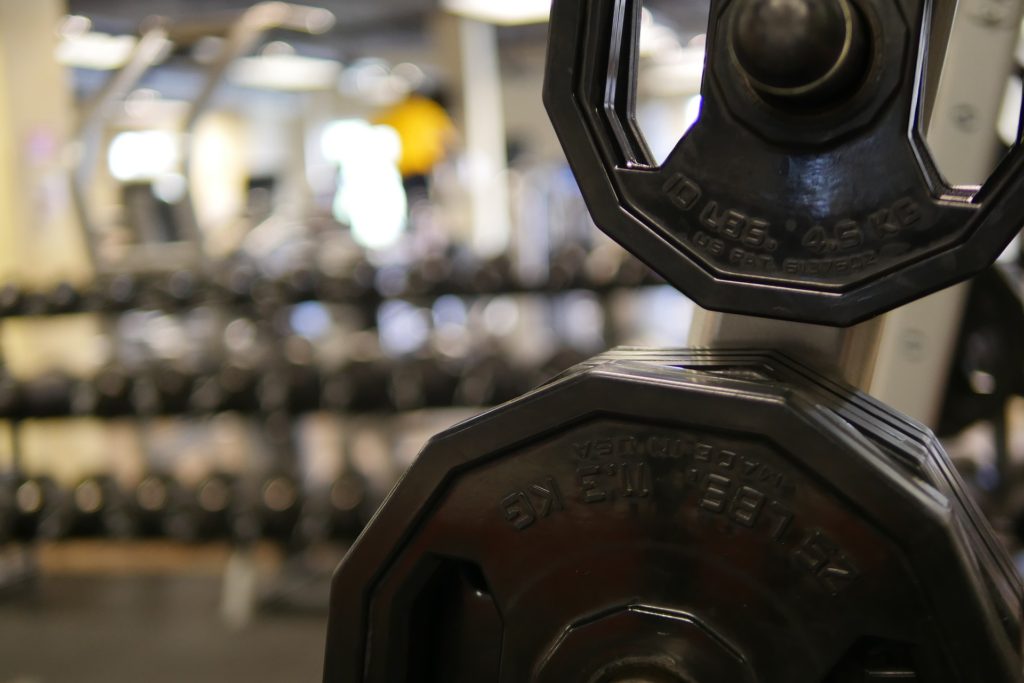A full-body workout plan is very necessary to stay fit. There are different muscles in the body; a workout plan should target the different muscles so that you can enjoy good health.
There are different health benefits people enjoy after they decide to be involved in workout sessions. A workout program that will target different body parts is necessary to gain muscles and shed fats.
When you get involved in the right workout programs, you will get to deal with different health complications. Some fats in the body can lead to health complications such as cardiovascular issues.
Relying on highly effective workout plans is necessary to start enjoying good health. Having the right workout program is very necessary if you would like to enjoy great results in your workout program.
Exercise Basics
To get started on your full-body workout plan, you should start with the workout basics. For example, you need to start with lunges, where you will get to develop balance and make other muscles get the required pressure when working out.
Other workout basics you can try include pushups. They target different parts of your body. When you maintain the right form when performing pushups, you will target different parts of your body and work out the different muscles.
Rely on the squats and dumbbells, and they will work towards making you enjoy great results in your workout process. The single-leg deadlifts and the burpees are among other workouts you can have the basis for your whole body.
The side planks are also necessary for making you enjoy different workouts results. Get the basics right, and it will be easy for you to enjoy the different benefits associated with working out.
Warmup
Having warmup is necessary to prepare the body for aerobic activity. When you get involved in warmups, your body will prepare to perform different workouts.
Your cardiovascular system should be fully prepared to enjoy the different warmups. When you decide to get the warmups, it will be easy for you to enjoy great success as you try to perform different workouts.
The warmups should start with low intensity then increase with time so that the body will be fully prepared to tackle the different health complications that can arise as you get involved in workouts.
Your muscles also prepare for the workout sessions after you decide to warm up the right way.
Exercises for Each Body Part
After you warm up, your full-body workout plan should target different parts of your body. For example, there are days you will target the core, back, shoulders, arm, and legs.
The different workout programs will target the different muscles of your body from where you can decide to utilize a given workout plan to enjoy the best results as you work out.
When you are fully prepared to work out and target the different muscles in your body, it will be easy to achieve the best results in the workout program.

Cardiovascular Exercises
Getting involved in cardiovascular exercise is necessary to improve your cardiovascular health.
You can easily avoid several cardiovascular health complications after you decide to get involved in cardiovascular exercises. Most of the exercises will not require you to use complicated gym tools.
Some of the cardiovascular exercises you can incorporate in your workout program are:
Brisk Walking
Set time aside to walk each morning. When you are involved in brisk walking, your health will have to pump blood fast and lead to good health.
You can even get a team of people who would like to work out. After spending a lot of time in your workplace, you can walk back home.
Brisk walking will target different muscles in your body and improve cardiovascular health. Ensure you have a program and follow it to enjoy the health benefits.
Running
Would you like to improve your cardiovascular health? You should try running; it is a highly effective strategy that will make you enjoy great health.
With the running process, different muscles of your body will be targeted. You can choose to run in your favorite trail and get to enjoy the different health benefits associated with it. It will be easy to enjoy the best experience in your workout routine.
Jogging
Morning jogging is an excellent cardiovascular workout. You can plan to have jogs with a family member, and it will contribute to making you enjoy great success in your workout process. The different steps you will take will go a long way in making you enjoy good health in the process.
Swimming
If you have a swimming pool in your home, it can be the best way to work out. When you are involved in swimming, you will target different muscles in your body and enjoy the best workout experience.
If you do not know how to swim, you can enroll in a swimming class to get the basics required to start swimming and exercise different parts of your body.
Cycling/Bicycling
If you have a bicycle, you can enjoy great success in your workout sessions. When you cycle, you will enjoy the best experience as you cycle around.
The workout program is fun, and it will improve your cardiovascular health. Form a team with family members and go out to cycle. The program will make you enjoy good health in the process.
Benefits of Cardiovascular Exercises
You will enjoy several benefits after you decide to get involved in cardiovascular exercises. Some of the benefits you will enjoy after you decide to get involved in cardiovascular exercises are:
Improves Cardiovascular Health
When you decide to get involved in cardiovascular workouts, you will improve your cardiovascular health. The different workouts you will get involved in will make you enjoy good health in the process.
Count on the various workout programs, and they will contribute to making you enjoy great success as you work out.
Lowers Blood Pressure
If you have issues with your blood pressure, you can always rely on cardiovascular workouts. The workouts are highly effective in keeping the blood pressure in check.
People who have their blood pressure at check are in the best position to enjoy good health in the process. Always work on the different cardiovascular workouts, and they will be an excellent way for you to start enjoying good health.
It Helps Regulate Blood Sugar
The issues related to blood sugar and diabetes will not disturb you anymore after deciding to opt for cardiovascular exercises.
The exercises are highly effective in making you burn more calories and reduce sugar imbalance in your body. Those interested in enjoying good health can count on the different exercises to enjoy good health in the process.
Rely on the highly effective exercises to enjoy good health in the process.
Reduces Asthma Symptoms
Research shows that those who have asthma can reduce the symptoms if they can start working out.
The cardiovascular workouts will make you improve your cardiovascular health. Different organs in your body rely on cardiovascular workouts.
Ensure you get involved in regular workouts, and you will start enjoying great results in your workout progress. The different steps you will take to start working out will make you enjoy a good life.
Reduces Chronic Pain
Sometimes you can develop chronic pain due to different health complications.
Rely on cardiovascular exercise, and it will lead to good health. The different workouts you will get involved in will make you enjoy great success when working out.
The issue of chronic pain can affect your life. You will improve your life to a great extent after getting the workouts right.
Aids Sleep
You need to get involved in cardiovascular workouts if you want to sleep well. There are several health benefits associated with good sleep.
If you can take the necessary measures and work out, you should ensure enough sleep. The different workouts you will get involved in will make you enjoy good sleep.
Good sleep makes your muscles relax and recover after workouts. It contributes to making you enjoy good health.
Regulates Weight
Being overweight can lead to several health complications. Cardiovascular workouts are very effective in helping you burn excess calories.
After you burn excess calories, you will start enjoying good health. Several health complications are related to being obese.
Avoid the stress of being obese, and it will avoid cases where you will face health challenges.
Strengthens Immune System
If you want to strengthen your immune system, then get involved in the workout programs.
They will contribute to making you enjoy good health in the process. Those looking forward to enjoying good health can always rely on the highly effective workout programs that will make your state enjoy improved immunity.
Benefits of Resistance Training Exercises
Getting involved in resistance training will lead to several health benefits. There are some short-term and long-term benefits you will enjoy after getting involved in the resistance training.
Your full-body workout plan should have resistance training so that you can enjoy benefits such as:
Sample Workout Plan #1:
Monday – Wednesday – Friday
Jog in place for 2 minutes to warmup
Push-ups 15 reps or to failure if you can’t do 15
Dumbell shoulder press 12 reps per side
Dumbell curls – alternating – 12 reps per side
25 crunches
Repeat 3-5 times at a pace that works for you
Tuesday – Thursday – Saturday
Jog in place for 2 minutes to warmup
Body-weight squats 15 reps
Lunges 10 reps per side
Mountain climbers 25 per side
Standing calf raises 25 reps
Bent over row with Dumbell or standing bent-over row with barbell
25 sit-ups
Repeat 3-5 times at a pace that works for you
Sample Workout Plan #2
Jog in place for 2 minutes to warmup
Day 1 thru 10: 10 push-ups, 10 mountain climbers, and 10 burpees. (Do 30 of each if you can)
Day 11-20: 20 of each
Day 21 and beyond: 30 of each
Eat: more fruits, more raw vegetables such as salads, lean protein such as chicken and fish
Don’t eat: refined sugar, fast food, processed food
Drink: water, water, water
Don’t drink: soda, bottled fruit drinks, loaded coffee drinks
Do: Wake up, get up and kick butt
Don’t: Let anything stop you
Long Term Benefits:
Decreased Risk of Injury
As part of the short-term benefits of getting involved in resistance training, you will reduce the risk of injury. Resistance training will make your muscles develop. You will improve your flexibility and balance making it hard to develop injuries.
Muscle injuries can hinder you from achieving your full potential when working out. Get involved in the resistance training, and you will enjoy great results.
Improves Focus
Your focus will improve if you get involved in the resistance training. It is a highly effective strategy that can make you enjoy great success as you work out.
Decreases Anxiety
When you get involved in workouts, you will release hormones to avoid cases where you will be exposed to anxiety. High levels of stress can affect your life; get involved in workouts, and you will rescue the anxiety and start enjoying the good life in the process.
Reduces Depressive Symptoms
Getting involved in resistance training has proven to be effective in helping you rescue symptoms of depression. Different issues in life can expose people to depression.
Find something to do, and you will quickly deal with the issue of depression. When you are actively involved in the workout sessions, it will be easy to deal with the depression issue and enjoy the good life.
Improves Feelings of Well-Being
You will start feeling happy and comfortable when you try to get involved in the workout sessions. They tend to stimulate different muscles in your body and make you start enjoying the good life.
You can always count on the workout programs, and they will contribute to making you want good health in the process.

Increases Self-Esteem
Your self-esteem will make you accomplish more in life. When you work out regularly, resistance training will target different muscles in your body and make you start enjoying the good life in the process. It makes you want good health in the process.
Reduces Markers of Inflammation
Issues related to inflammation will be no more after you get involved in the resistance training. It is a highly effective method that will contribute to making you enjoy the good life in the process.
Long Term Benefits
You will enjoy several long-term benefits after you decide to incorporate a full-body workout plan in your exercise. Some of the benefits you will enjoy include:
Improves Cognitive Function
Research shows that people involved in regular resistance training tend to improve their cognitive function. The process is highly effective in making you enjoy a good life.
Decreases Risk of Dementia
You will not have to worry about dementia. The workout program will play a great role in making you enjoy great success in your efforts to lower the risk of dementia in the future.
Controlled Body Fat
It is hard for people who get involved in resistance training to develop excess body fats. Your weight will be kept in check to decide to get involved in the workout program.
Improved Bone Health
If you have issues related to bone health, you need to try resistance training. It has been proven a great way to keep your bone health in check. Ensure you incorporate the proper diet, and your bone health will remain intact.
Increased Strength
Resistance training makes your muscles develop more strength. If you need to get involved in activities such as weight lifting, then look for more strength training in your workout progress.
Maintaining Muscle Tissue
As people age, they tend to lose muscle tissue. It will be a different case after you decide to get involved in resistance training. The training is highly effective in allowing you to enjoy good health in the process.
The Health Wealth Lifestyle provides articles for information only. Consult your health care provider as needed.





















